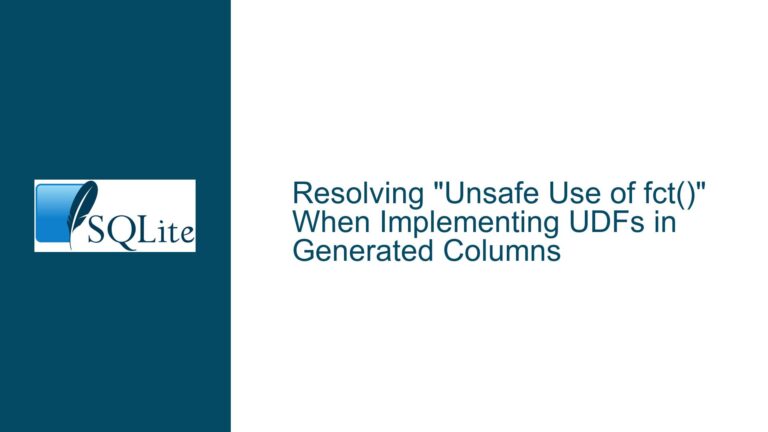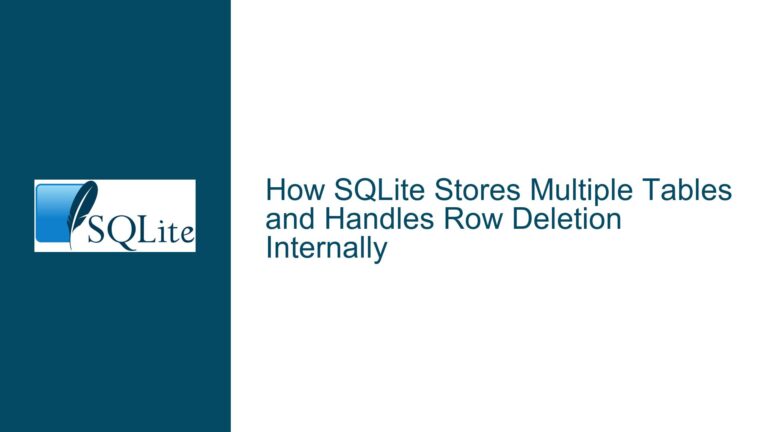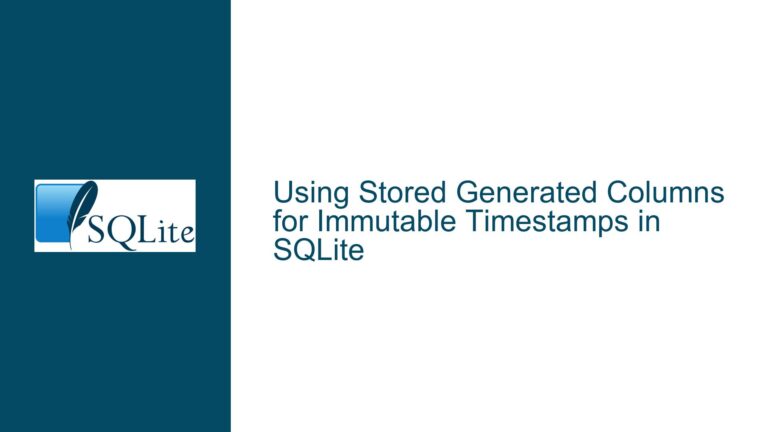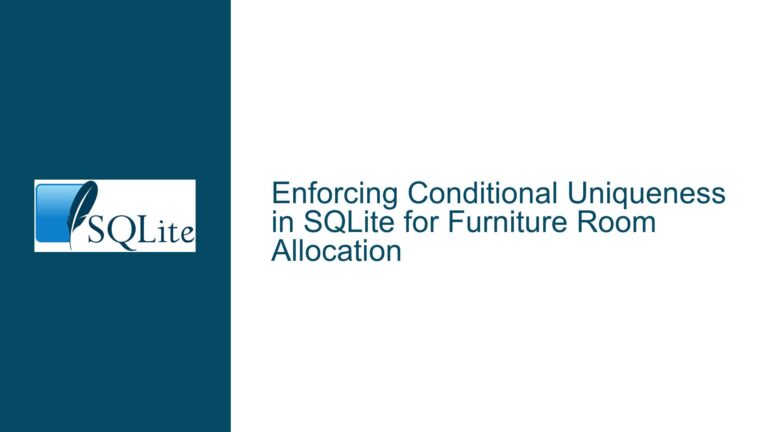SQLite Change Counter Behavior in WAL Mode
SQLite Change Counter and WAL Mode Interaction
The SQLite database engine employs a change counter within the main database file to track modifications. This counter increments with each transaction that alters the database, providing a simple mechanism to detect changes. However, when SQLite operates in Write-Ahead Logging (WAL) mode, the behavior of the change counter diverges significantly from its operation in the default rollback journal mode.
In WAL mode, SQLite does not update the change counter in the main database file. This design choice stems from the fundamental differences in how WAL mode handles transactions and ensures durability. In WAL mode, changes are first written to a separate WAL file, and only during a checkpoint are these changes transferred to the main database file. This separation of concerns enhances performance by reducing contention on the main database file and allows for concurrent read and write operations.
The change counter’s absence in WAL mode can be perplexing for developers accustomed to its presence in rollback journal mode. The change counter’s primary role is to signal when the database file has been modified, which is crucial for applications that need to detect changes without querying the database content directly. In WAL mode, the WAL file and its associated index file (the SHM file) become the primary sources of truth for recent changes, rendering the change counter in the main database file less relevant.
Performance and Design Rationale Behind Change Counter Omission in WAL Mode
The decision to omit the change counter in WAL mode is rooted in performance optimization and design efficiency. Updating the change counter involves additional code execution, CPU cycles, and I/O operations. In a high-performance database system like SQLite, even minor overheads can accumulate, especially in scenarios with frequent transactions.
In WAL mode, the primary goal is to maximize concurrency and minimize blocking. By not updating the change counter, SQLite reduces the number of write operations to the main database file, thereby decreasing the likelihood of write contention. This design choice aligns with WAL mode’s overarching objective of enhancing performance in multi-threaded and multi-process environments.
Moreover, the change counter’s utility diminishes in WAL mode due to the presence of the WAL file. The WAL file contains a record of all recent changes, making it a more reliable indicator of database modifications than the change counter. The WAL file’s existence allows SQLite to defer updates to the main database file until a checkpoint occurs, further reducing the need for a change counter.
Leveraging Checkpoints and Alternative Methods for Change Detection
While the change counter is not updated in WAL mode, developers can still determine the database’s change status by leveraging checkpoints and alternative methods. A checkpoint in WAL mode transfers changes from the WAL file to the main database file, effectively synchronizing the two. By monitoring checkpoint events, developers can infer when significant changes have been committed to the main database file.
One approach to detecting changes in WAL mode is to use the sqlite3_wal_checkpoint function or the PRAGMA wal_checkpoint command to manually trigger checkpoints. After a checkpoint, the main database file reflects the latest changes, and developers can use other mechanisms, such as file modification timestamps or custom metadata tables, to track changes.
Another method involves querying the WAL file directly to ascertain the presence of uncheckpointed changes. The WAL file’s header contains information about the number of frames and the last committed transaction, which can be used to gauge the database’s change status. However, this approach requires a deeper understanding of the WAL file format and may not be suitable for all applications.
For applications that require precise change tracking, implementing a custom solution, such as a trigger-based change logging system, may be necessary. Triggers can be set up to log changes to a separate table whenever insert, update, or delete operations occur. This table can then be queried to determine the database’s change status, providing a more granular and application-specific mechanism than the change counter.
In conclusion, while the change counter’s absence in WAL mode may initially seem like a limitation, it is a deliberate design choice aimed at optimizing performance and concurrency. By understanding the rationale behind this decision and exploring alternative methods for change detection, developers can effectively manage and monitor database modifications in WAL mode. Whether through leveraging checkpoints, querying the WAL file, or implementing custom change tracking mechanisms, there are multiple avenues to achieve the desired functionality without relying on the change counter.






